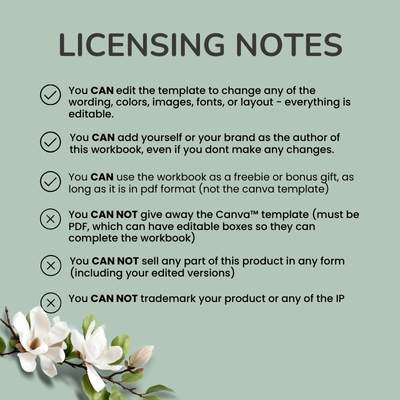Your Compass to Better Sleep: Navigating Common Sleep Disruptors

Your Compass to Better Sleep: Navigating Common Sleep Disruptors
Sleep. It’s the unsung hero of our well-being, the silent architect of our days. Yet, for many of us, it remains an elusive sanctuary, a dream within a dream. We toss, we turn, we chase those elusive REM cycles, often feeling like we’re adrift in a sea of wakefulness. But what if there was a compass, a guide to help you navigate the choppy waters of sleep disruption and find your way back to restorative slumber?
This isn’t just another article about counting sheep. This is about understanding the landscape of your own sleep, identifying the uncharted territories that throw you off course, and equipping yourself with the tools to chart a new, more peaceful course. Think of your sleep as a grand voyage. Sometimes, the winds are fair, the stars are aligned, and you glide effortlessly into the harbor of dreams. Other times, storms brew, unexpected currents pull you astray, and the destination seems impossibly distant.
We’re here to help you understand those storms, to chart those currents, and ultimately, to steer your vessel towards the calm waters of deep, rejuvenating sleep. Your journey to better sleep begins with recognizing the common disruptors that lie in wait.
The Unseen Saboteurs: Common Sleep Disruptors and How to Outsmart Them
Just as a ship can be slowed by barnacles on its hull or a leak in its structure, your sleep can be undermined by a myriad of seemingly small, yet significant, factors. Let’s identify these saboteurs and equip you with the knowledge to neutralize their impact.
1. The Blue Light Siren Song: The Ubiquitous Screen
The Disruptor: In our hyper-connected world, screens have become the modern-day sirens, luring us with their captivating glow. The blue light emitted by smartphones, tablets, laptops, and televisions is a notorious sleep disruptor. It tricks your brain into thinking it’s still daytime, suppressing the production of melatonin, the hormone that signals it’s time to rest.
Your Compass Point: Establish a Digital Sunset. Just as the sun sets, create your own digital curfew. Aim to power down all electronic devices at least 60-90 minutes before bedtime. If you absolutely must use a screen, utilize blue light filtering apps or wear blue light blocking glasses. Think of this as closing the curtains on the day’s bright glare, allowing your mind to transition into a more peaceful state.
2. The Caffeine Kraken: The Stimulating Sip
The Disruptor: For many, caffeine is the morning elixir, the afternoon pick-me-up. But this beloved stimulant can linger in your system for hours, acting as a persistent wakefulness agent, a true Kraken in the depths of your sleep cycle.
Your Compass Point: Mind the Caffeine Tides. Be mindful of your caffeine intake, especially in the afternoon and evening. Most experts recommend cutting off caffeine consumption at least six to eight hours before bedtime. Consider switching to decaffeinated options or herbal teas as the day draws to a close. This is about understanding the ebb and flow of caffeine’s influence on your internal clock.
3. The Anxiety Albatross: The Overthinking Overload
The Disruptor: Our minds are often the most active when we try to quiet them. Worries, to-do lists, and unresolved thoughts can circle like an albatross, preventing us from finding mental peace. This “mind-racing” phenomenon is a significant sleep disruptor.
Your Compass Point: Anchor Your Thoughts with a “Worry Time.” Designate a specific time earlier in the evening, perhaps 2-3 hours before bed, to consciously address your worries. Jot down your concerns, brainstorm potential solutions, or simply acknowledge them. Then, consciously put them aside. This structured approach can prevent these anxieties from hijacking your bedtime. It’s like preparing your cargo and securing your vessel before the storm hits.
4. The Bedroom Bedlam: The Environment of Disruption
The Disruptor: Your bedroom should be a sanctuary for sleep. However, a room that is too hot, too cold, too bright, or too noisy can turn it into a battleground of wakefulness.
Your Compass Point: Cultivate a Sleep Haven. Optimize your bedroom for sleep. Aim for a cool, dark, and quiet environment. Invest in blackout curtains, earplugs, or a white noise machine if needed. Ensure your mattress and pillows are comfortable and supportive. Your bedroom should be a tranquil cove, free from the clamor of the outside world.
5. The Late-Night Feast: The Digestive Disruption
The Disruptor: Indulging in heavy meals or excessive fluids close to bedtime can disrupt your sleep by causing indigestion, heartburn, or the need for frequent bathroom trips.
Your Compass Point: Schedule Your Meals Wisely. Try to finish your last substantial meal at least two to three hours before bedtime. If you need a light snack, opt for something easily digestible like a small portion of yogurt or a banana. This allows your digestive system to wind down, preventing it from working overtime while you’re trying to sleep. It’s about ensuring your internal machinery is in low-power mode.
6. The Inconsistent Itinerary: The Erratic Schedule
The Disruptor: Our bodies thrive on routine. Going to bed and waking up at drastically different times, especially on weekends, can throw your natural circadian rhythm, or internal body clock, into disarray. This inconsistency is like sailing without a consistent reference point.
Your Compass Point: Embrace the Rhythmic Anchor. Strive for a consistent sleep schedule, even on days off. Aim to go to bed and wake up within a similar timeframe each day. While a little flexibility is natural, a consistent rhythm helps regulate your body’s natural sleep-wake cycle, making it easier to fall asleep and wake up feeling refreshed. This is the steady beat that keeps your sleep compass true.
Navigating Beyond the Disruptors: Building a Resilient Sleep System
Understanding these common disruptors is the first step. The next is to build a resilient sleep system, one that can weather the occasional storm and consistently guide you towards peaceful slumber.
Here’s a simple table to help you track your progress and identify potential areas for improvement:
| Sleep Disruptor | My Current Challenge (Briefly) | Strategies Implemented/To Try | My Sleep Goal (Focus Area) |
|---|---|---|---|
| Blue Light Siren Song | Late-night scrolling | Digital sunset, blue light filter | Less screen time before bed |
| Caffeine Kraken | Afternoon coffee habit | Cutoff time, herbal tea | Reduce evening caffeine |
| Anxiety Albatross | Racing thoughts at night | Worry time, journaling | Quieter mind before sleep |
| Bedroom Bedlam | Bright room, noisy neighbor | Blackout curtains, earplugs | Darker, quieter space |
| Late-Night Feast | Snack before bed | Lighter evening meals | Finish eating earlier |
| Inconsistent Itinerary | Varying weekend sleep times | Sticking to a routine | Consistent wake-up time |
Remember, “your” refers to something belonging to you, while “you’re” is a contraction of “you are.” This article is all about understanding your sleep and the things that are affecting your ability to rest.
This journey to better sleep is a personal voyage. It requires patience, self-awareness, and a willingness to experiment. By understanding the common disruptors and implementing these strategies, you are essentially recalibrating your internal compass, guiding you towards the tranquil shores of restorative sleep. So, set sail, navigate wisely, and may your nights be filled with peaceful dreams.

Additional Information
Your Compass to Better Sleep: Navigating Common Sleep Disruptors
A good night’s sleep is foundational to our overall well-being, influencing everything from our mood and cognitive function to our physical health. Yet, for many, achieving restful sleep feels like a distant dream, often derailed by a myriad of common disruptors. This guide aims to be your compass, helping you navigate these challenges and chart a course toward more restorative slumber. We’ll delve into the prevalent culprits that interfere with sleep and provide actionable strategies to overcome them.
Before we embark on this journey, let’s clarify a frequently confused pair of words. As dictionaries like Merriam-Webster, Cambridge, and Collins English Dictionary confirm, “your” is a possessive determiner, indicating something belonging to or associated with “you” (singular or plural). For instance, it’s your bed, your schedule, or your daily routine. The correct usage of “your” is crucial for clear communication, as Grammarly and Dictionary.com highlight.
Now, let’s navigate the common sleep disruptors:
1. The Overactive Mind: The “Brain Dump” Dilemma
Many of us find our minds racing when our heads hit the pillow, replaying the day’s events, worrying about tomorrow, or even getting lost in creative thought. This mental chatter can make falling asleep incredibly difficult.
Analysis: This phenomenon is often linked to stress and anxiety. Our brains, designed to solve problems and process information, can become overstimulated, especially if we haven’t found healthy ways to manage our thoughts throughout the day. The pressure to fall asleep can paradoxically exacerbate the problem, creating a feedback loop of worry.
Strategies:
- The “Brain Dump” Technique: Before bed, dedicate 10-15 minutes to writing down everything on your mind – tasks, worries, ideas, to-do lists. This externalizes your thoughts, freeing up mental space and reducing the likelihood of them surfacing later.
- Mindfulness and Meditation: Practicing mindfulness or guided meditation can help to anchor you in the present moment and quiet your internal dialogue. Numerous apps and online resources offer guided sleep meditations.
- Journaling: Similar to a brain dump, journaling can be a more reflective practice. Writing about your feelings, gratitude, or even a simple recap of your day can provide closure and reduce mental rumination.
2. The Unruly Sleep Schedule: The Disruption of Circadian Rhythms
Our bodies operate on an internal clock, known as the circadian rhythm, which regulates our sleep-wake cycle. Inconsistent sleep and wake times can significantly disrupt this natural rhythm.
Analysis: Social obligations, demanding work schedules, or even a desire to “catch up” on sleep can lead to erratic sleep patterns. This inconsistency confuses your body’s internal cues, making it harder to fall asleep at a consistent time and potentially leading to daytime fatigue and grogginess.
Strategies:
- Consistency is Key: Aim to go to bed and wake up around the same time every day, even on weekends. This reinforces your body’s natural sleep-wake signals.
- Gradual Adjustments: If you need to shift your sleep schedule, do so gradually, by 15-30 minutes each day, rather than making drastic changes.
- Prioritize Sleep: Recognize sleep as a non-negotiable aspect of your health and well-being. Make conscious choices to protect your sleep time.
3. The Electronic Glow: Blue Light and Screen Time
The blue light emitted from electronic devices like smartphones, tablets, and computers can suppress the production of melatonin, the hormone that signals to your body that it’s time to sleep.
Analysis: In our increasingly digital world, it’s common to engage with screens right up until bedtime. This exposure to blue light tricks your brain into thinking it’s still daytime, interfering with your body’s natural sleep-wake cycle and making it harder to initiate sleep.
Strategies:
- Digital Sunset: Create a “digital sunset” by putting away all electronic devices at least one to two hours before bed.
- Blue Light Filters: If you must use screens, utilize blue light filters or night mode settings on your devices.
- Alternative Evening Activities: Replace screen time with relaxing activities like reading a physical book, taking a warm bath, or listening to calming music.
4. Lifestyle Choices: Caffeine, Alcohol, and Diet
What you consume throughout the day can have a profound impact on your sleep quality.
Analysis:
- Caffeine: Caffeine is a stimulant that can remain in your system for several hours, making it difficult to fall asleep.
- Alcohol: While alcohol might initially make you feel drowsy, it disrupts sleep architecture later in the night, leading to fragmented and less restorative sleep.
- Heavy Meals: Large, heavy meals close to bedtime can cause indigestion and discomfort, making it harder to find a comfortable sleeping position.
Strategies:
- Limit Caffeine Intake: Avoid caffeine in the late afternoon and evening. Be mindful of hidden sources like chocolate and some teas.
- Moderate Alcohol Consumption: If you choose to drink alcohol, do so in moderation and well before bedtime.
- Mindful Eating: Opt for lighter meals in the evening and allow at least two to three hours between your last meal and bedtime.
5. The Sleep Environment: Light, Noise, and Temperature
The physical environment of your bedroom plays a crucial role in your ability to fall and stay asleep.
Analysis: A bedroom that is too bright, too noisy, or too warm can create discomfort and disrupt your sleep. Even small disturbances can be enough to wake you up or prevent you from entering deeper sleep stages.
Strategies:
- Darkness is Your Friend: Make your bedroom as dark as possible. Use blackout curtains, an eye mask, or cover any light-emitting devices.
- Minimize Noise: Use earplugs, a white noise machine, or a fan to create a consistent, soothing sound environment.
- Optimal Temperature: Most people sleep best in a slightly cooler room, typically between 60-67°F (15-19°C). Experiment to find what works best for you.
Empowering Your Sleep Journey
Understanding these common sleep disruptors is the first step toward reclaiming your nights. By implementing these strategies, you can build a more supportive sleep routine and improve the quality of your rest. Remember, achieving better sleep is an ongoing journey. Be patient with yourself, experiment with different approaches, and celebrate the small victories along the way. Your compass is now in your hands – navigate wisely, and may your nights be filled with restorative sleep.
